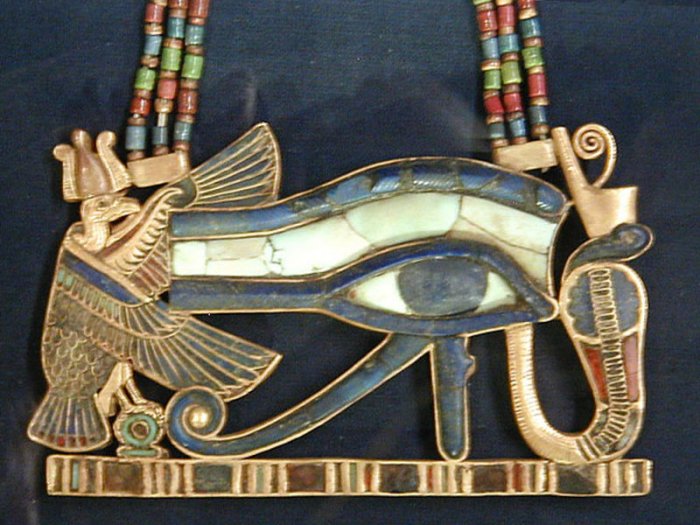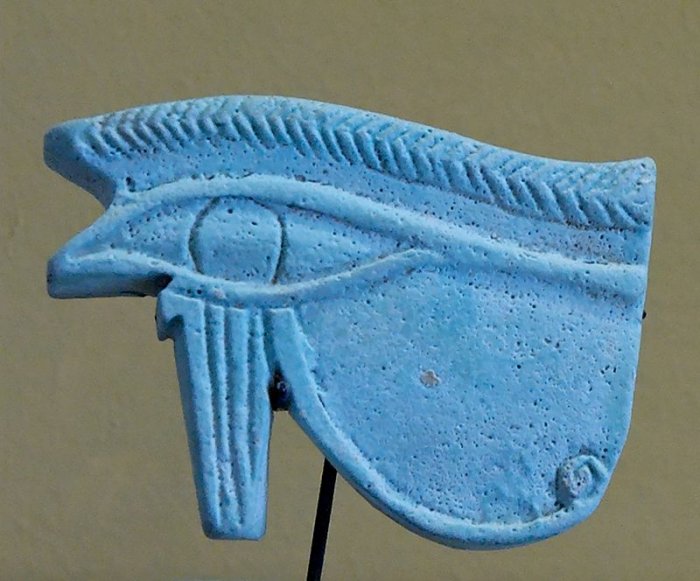Eye Of Horus – Powerful, Ancient Egyptian Symbol With Deep Meaning
David Tee - AncientPages.com - What does the eye mean? It is the big question, and the history of the Eye of Horus is fascinating.
An Eye of Horus or Wedjat pendant. Credit: Jon Bodsworth, Wikipedia
Archaeological research has shown that the Eye of Horus was seen by some ancient people, not just the Egyptians, as a special symbol that fought off evil spirits, similar to the purpose of the Hamsa symbol. The archaeologists came to this conclusion after finding three eyes of Horus on the Tel Dor necklace.
Another use for the Eye of Horus can be found in ancient Egyptian literature, where its meaning was transformed from a symbol for good things to an expression of positive imagery. This transformation did not remove it from its association with the sun but added another facet to its godly status.
While the Eye still holds many ancient meanings, it is safe to say that different people place different meanings on it. Yet, where did the eye originate?
The Origin Of The Eye Of Horus
This symbol for goodness or a god can be found in the 15th to 13th centuries BC in the land of the Palestinians. But this is different from the region of origin. The Palestinian use of the Eye was imported from the Egyptians, which was quickly done since Egypt ruled much of Palestine at different times in ancient history.
The Egyptian god Horus goes way back to early ancient Egyptian times. Horus was known as the sun god long before Ra took his place. Yet, the Eye of Horus has an even earlier origin; before it became known as the Eye of Horus, it was referred to as the Wadjet.
Amulet with the Eye of Horus. Earthenware, Achaemenid artwork, late 6th–4th centuries BC. From the Tell of the Apadana in Susa. Credit: Marie-Lan Nguyen, Wikipedia
There are variations to the term Wadjet, and it was often associated with the goddess named Wadjet. Before it became attached to Horus, other gods enjoyed being associated with the all-seeing eye. These gods were Hathor, Bast, Sekhmet, Tefnut, Nekhbet, and Mut.
The Loss Of An Eye
The early sun god Horus was not just associated with the sun. His two eyes were said to be both the sun and the moon. When Ra took over the title of the sun god, he was also known as "Ra-Horakhty or Ra, who is Horus of the two horizons."
In a battle with Set, Horus lost the use of one eye. It is often debated which of the two myths does not agree with each other on which eye was damaged. Thoth restored the eye, which was when Horus was also named Wadjet.
The waxing and waning of the moon were often thought of as a replay of the loss and subsequent healing of Horus' eye.
Ancient Use Of The Eye Of Horus
Because many ancient Egyptians believed that the Eye was all-seeing, they decided that the best use was to bring the eye to jewelry, amulets, knives, and other items in their daily life. By doing so, the ancient Egyptians and Palestinians thought they were being protected from evil.
The all-seeing eye could see what was happening and then summon help for the victim.
The Eye Of Horus And The Elements
Besides the all-seeing nature and protective properties assigned to the Eye by the ancient Egyptians, they also associated different elements with it. These elements had to do with the senses and thought:
§ The eyebrow above the eye represents the thought
§ The pupil, of course, meant sight
§ The triangle shape inside the eye was to represent hearing
§ The triangle shape represents the smell
§ Finally, the spiral curve was thought to be the tongue, and it meant taste
Left: The Eye of Providence can be seen on the reverse of the Great Seal of the United States, seen here on the US $1 bill. Credit: Wikipedia - Right: All-seeing eye on the top of the Declaration of Human Rights (1789), French Revolution. Credit: Wikipedia
Along with this and the protective properties given to the eye, the ancient added one more property. The ancients used the eye to help them form their ingredients for medicines and pigments.
The eye is divided into six parts to represent the destruction caused by the god Set. Not only were those parts given the elements above but they were also given specific fractions. The smell was ½; Sight was ¼; thought was 1/8; Hearing was 1/16; Taste was 1/32; and Touch was 1/64.
The Egyptians could do simple and complicated math problems and calculations by using the fractions assigned to Horus' eye parts.
The Eye Is Everywhere
It is the key to understanding the Eye of Horus. It has to be everywhere to see all things. Even the dead in ancient Egypt were inaccessible from the eye's gaze. Thoth is recorded in the ancient Egyptian Book of the Dead as the one who repaired blind or damaged eyes.
It was done because the Egyptians believed every body part had to function normally to help the deceased in the afterlife. Yet this was not the only mention of the eye concerning the dead.
The eye of Horus was found throughout different tombs, sarcophagi, coffins, boats, and much more. Horus had an omnipresence in Egyptian life. Sailors wanted his protection when they departed on dangerous sailing adventures.
The Modern Use Of The Eye
The most famous modern use of the Eye of Horus is its association with the Illuminati.
As mentioned earlier in Ancient Pages, there is a close connection between the Eye of Providence, the All-Seeing Eye, and the Eye of Horus. You may have seen the Eye of Providence on the back of the American dollar bill. The reason it is included has yet to be well known. But for the engravers of the dollar bill, it serves its purpose.
The Eye of Providence is a powerful symbol used for hundreds of years, if not longer. Some scholars trace its history to ancient Egypt and the Eye of Horus. The All Seeing Eye has been an important Christian symbol that can often be found on stained glass windows of churches.
Though science has since dispelled many of the myths associated with the Eye, it has not lost its attractiveness, and many people look to use it for protection or other purposes.
With a clouded origin and application, everyone in the modern age can apply their meaning and use to the Eye of Horus. It can be done even though modern Egyptians do not adhere to ancient myths or use the Eye daily.
With the dangers that lie in the ancient and modern world, it is not surprising that some people do turn to the Eye of Horus. They do this to find peace of mind and a haven from harm.
Written by – David Tee - AncientPages.com Staff Writer
Updated on Nov 24, 2023
Copyright © AncientPages.com All rights reserved. This material may not be published, broadcast, rewritten or redistributed in whole or part without the express written permission of AncientPages.com
Expand for referencesPlatt, E.E., “Bone Pendants”, (1978). Biblical Archaeologist, 41.
Stern, E. “What Happened to the Cult Figurines? Israelite Religion Purified After the Exile”, (1989). BAR, 15(4).
Ulmar, R.B.K., (2003), “The Divine Eye in Ancient Egypt and in the Midrashic Interpretation of Formative Judaism”, Journal of Religion and Society, vol. 5 pgs. 1-17.
Rivka B. Kern Ulmer - The Divine Eye in Ancient Egypt and in the Midrashic
Interpretation of Formative Judaism, Bucknell University
More From Ancient Pages
-
 3.2 Million-Year-Old ‘Lucy’ Could Walk On Two Legs – First Hominin Muscle Reconstruction
Archaeology | Jun 20, 2023
3.2 Million-Year-Old ‘Lucy’ Could Walk On Two Legs – First Hominin Muscle Reconstruction
Archaeology | Jun 20, 2023 -
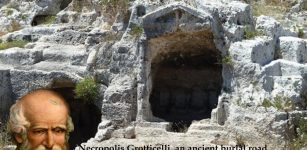 Archimedes From Syracuse – Master Of Science Whose Legacy Still Remains Powerful
Featured Stories | Sep 20, 2017
Archimedes From Syracuse – Master Of Science Whose Legacy Still Remains Powerful
Featured Stories | Sep 20, 2017 -
 How Did A Piece Of An ‘Epic’ Viking Sword End Up In The Netherlands?
Vikings | Dec 4, 2024
How Did A Piece Of An ‘Epic’ Viking Sword End Up In The Netherlands?
Vikings | Dec 4, 2024 -
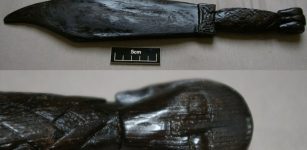 1,000-Year-Old Viking Weaver’s Sword Reveals Its Secrets
Archaeology | Apr 17, 2022
1,000-Year-Old Viking Weaver’s Sword Reveals Its Secrets
Archaeology | Apr 17, 2022 -
 Viking Age Horse Bridle Found Under The Ice 2,000 Meters Above Sea Level
Archaeology | Sep 28, 2023
Viking Age Horse Bridle Found Under The Ice 2,000 Meters Above Sea Level
Archaeology | Sep 28, 2023 -
 Wendigo: Cannibalistic Shapeshifter In Mythology Of Indians Of North America And Canada
Featured Stories | Sep 3, 2016
Wendigo: Cannibalistic Shapeshifter In Mythology Of Indians Of North America And Canada
Featured Stories | Sep 3, 2016 -
 Fulani: Africa’s Pastoralists Traced To Green Sahara Period,12,000 – 5,000 Years Ago
DNA | Feb 26, 2025
Fulani: Africa’s Pastoralists Traced To Green Sahara Period,12,000 – 5,000 Years Ago
DNA | Feb 26, 2025 -
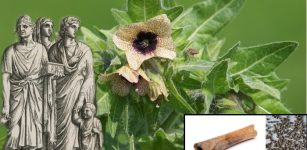 Ancient Romans Used The Poisonous Black Henbane Plant As Hallucinogenic Medicine
Archaeology | Feb 9, 2024
Ancient Romans Used The Poisonous Black Henbane Plant As Hallucinogenic Medicine
Archaeology | Feb 9, 2024 -
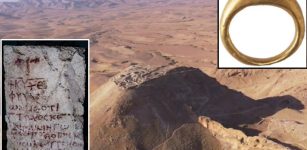 Byzantine Greek Inscription Of Psalms 86 Found In Hyrcania
Archaeology | Sep 29, 2023
Byzantine Greek Inscription Of Psalms 86 Found In Hyrcania
Archaeology | Sep 29, 2023 -
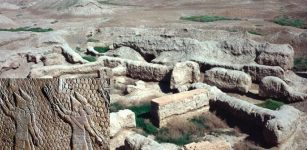 Lost Kingdom Of Mari – Once Important Commercial And Political Center Of Mesopotamia
Featured Stories | Jan 25, 2018
Lost Kingdom Of Mari – Once Important Commercial And Political Center Of Mesopotamia
Featured Stories | Jan 25, 2018 -
 Oldest Footprints Of Pre-Humans Discovered In Crete – They Are 6 Million-Year-Old!
Archaeology | Oct 12, 2021
Oldest Footprints Of Pre-Humans Discovered In Crete – They Are 6 Million-Year-Old!
Archaeology | Oct 12, 2021 -
 Medusa – Cursed By Athena And Killed By Perseus
Featured Stories | Jul 30, 2018
Medusa – Cursed By Athena And Killed By Perseus
Featured Stories | Jul 30, 2018 -
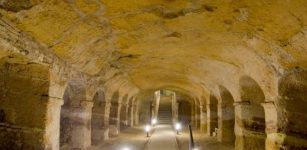 Mysterious Camerano Underground City – Secret Meeting Place For Knights Templar?
Featured Stories | Dec 13, 2017
Mysterious Camerano Underground City – Secret Meeting Place For Knights Templar?
Featured Stories | Dec 13, 2017 -
 10 Incredible And Bizarre Ancient Cases Of Mass Hysteria
Featured Stories | Jul 14, 2015
10 Incredible And Bizarre Ancient Cases Of Mass Hysteria
Featured Stories | Jul 14, 2015 -
 Mysterious Fossilized Antarctic Forest May Offer Evidence Of The Great Flood – But Some Facts Speak Against This Theory
Archaeology | Dec 27, 2017
Mysterious Fossilized Antarctic Forest May Offer Evidence Of The Great Flood – But Some Facts Speak Against This Theory
Archaeology | Dec 27, 2017 -
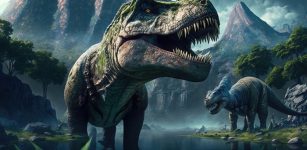 Scientists Say Dinosaurs Could Be The Reason Humans Can’t Live For 200 Years
Featured Stories | Jan 8, 2024
Scientists Say Dinosaurs Could Be The Reason Humans Can’t Live For 200 Years
Featured Stories | Jan 8, 2024 -
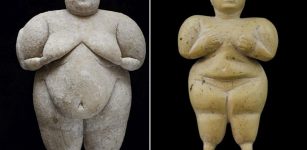 Figurines Unearthed At 9,000-Year-Old Çatalhöyük Site Symbolize Elderly Women, Not Goddess Cybele
Archaeology | Mar 1, 2017
Figurines Unearthed At 9,000-Year-Old Çatalhöyük Site Symbolize Elderly Women, Not Goddess Cybele
Archaeology | Mar 1, 2017 -
 Corded Ware Culture: Skillful Female Artisans Produced Extremely Innovative Pottery 5,000 Years Ago
Archaeology | Mar 30, 2018
Corded Ware Culture: Skillful Female Artisans Produced Extremely Innovative Pottery 5,000 Years Ago
Archaeology | Mar 30, 2018 -
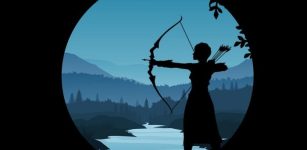 Shattering The Myth Of Men As Hunters And Women As Gatherers
Archaeology | Jun 29, 2023
Shattering The Myth Of Men As Hunters And Women As Gatherers
Archaeology | Jun 29, 2023 -
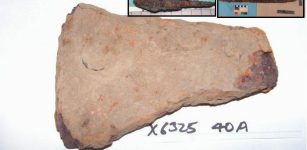 Spearheads – The Chemical Fingerprint Of Viking Weapons – New Study
Archaeology | Feb 18, 2022
Spearheads – The Chemical Fingerprint Of Viking Weapons – New Study
Archaeology | Feb 18, 2022

